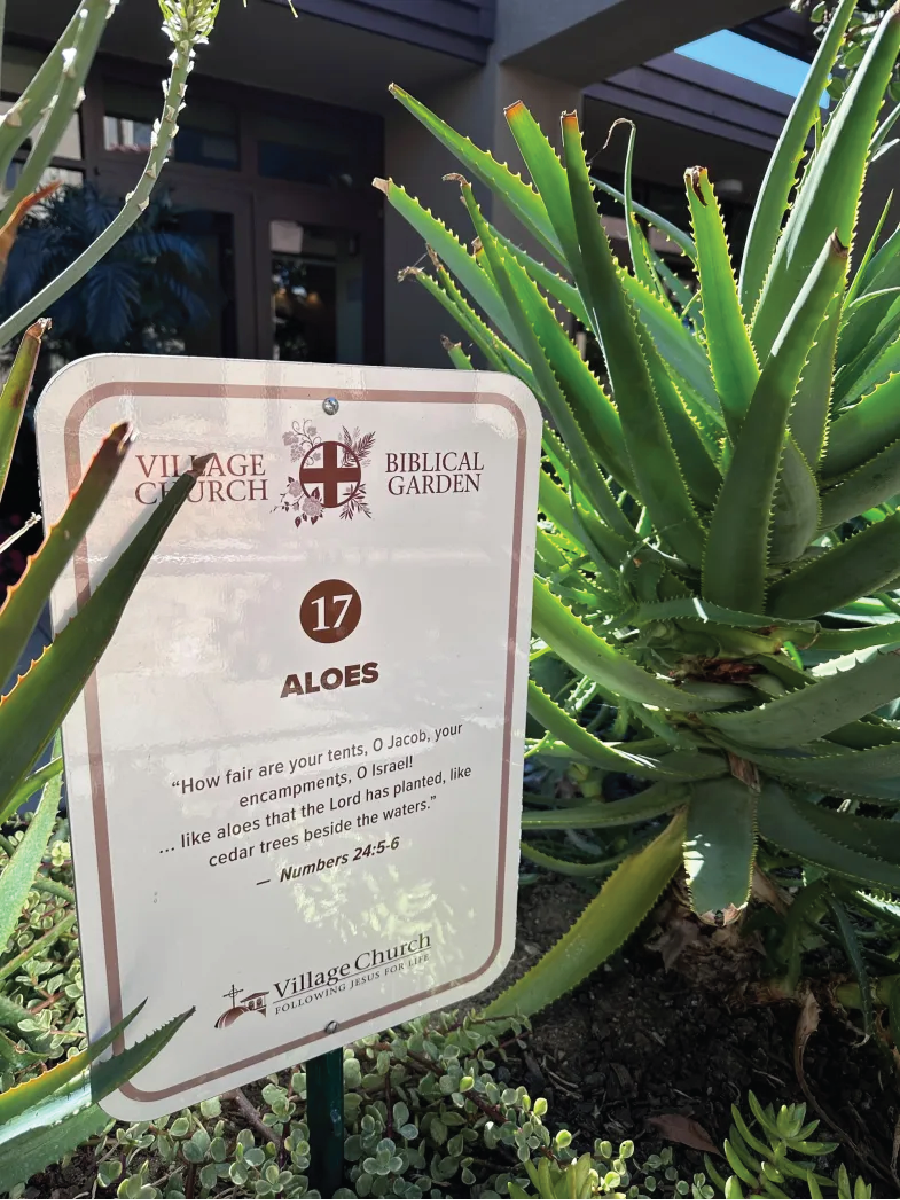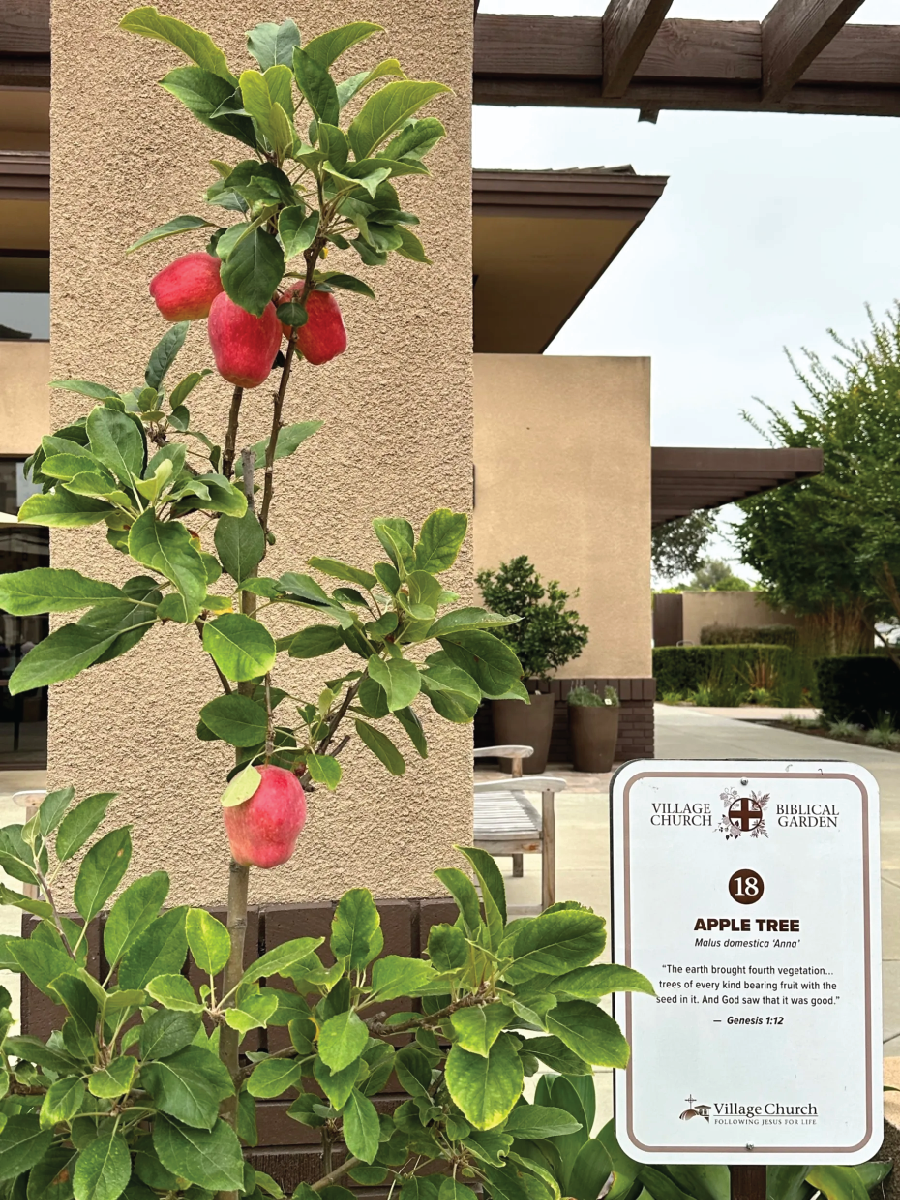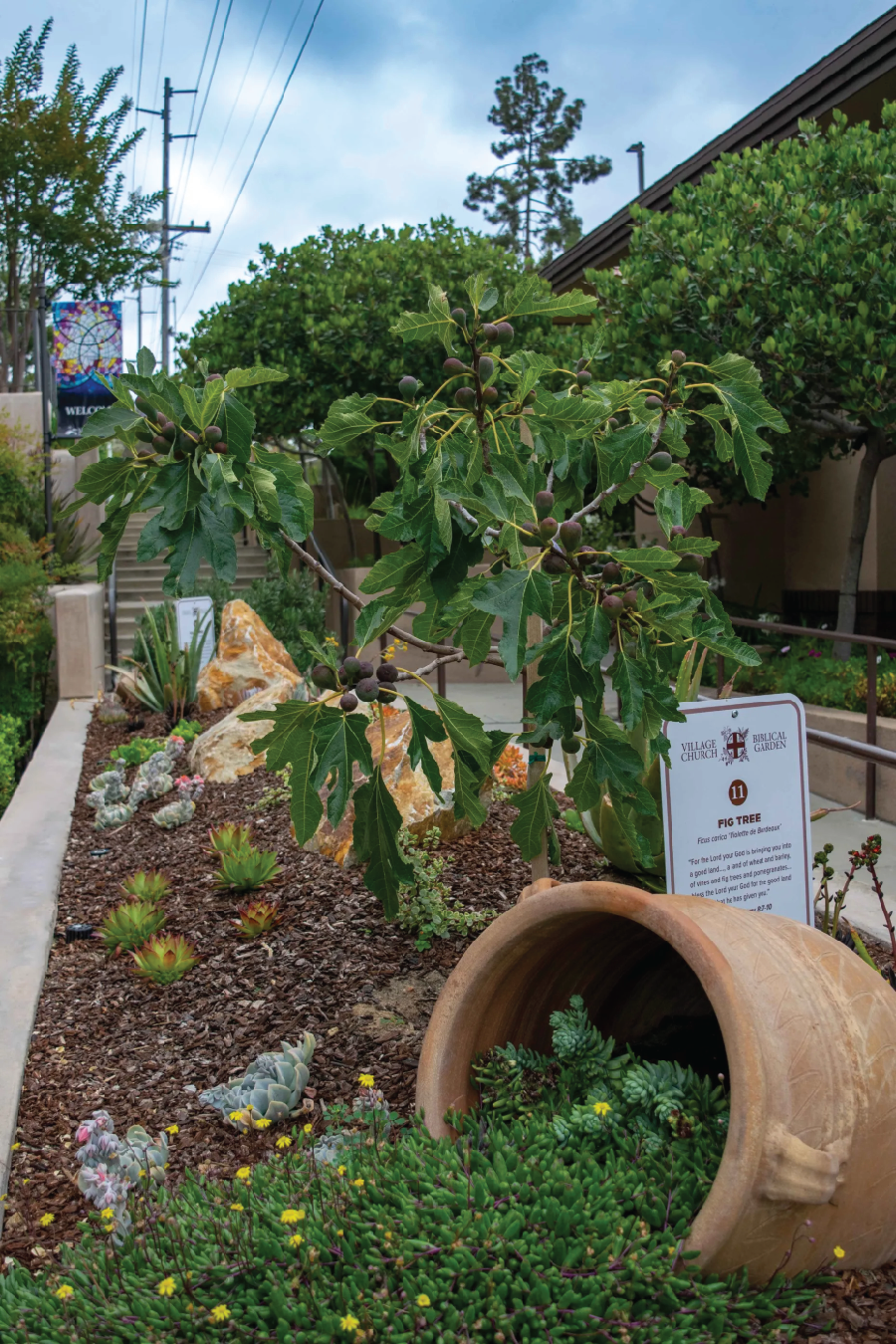Create a modern-day garden with a hallowed past

Many varieties of aloes thrive in San Diego’s Mediterranean climate. In ancient times, they were an important part of cultural practices. (Francie Murphy)
Scores of plants mentioned in ancient religious texts also thrive in San Diego's climate, with its Mediterranean-like weather
By Bob Frey and Francie Murphy
(This article originally appeared in the April 12, 2025 edition of the San Diego Union-Tribune)
The Mediterranean climate, characterized by dry summers and wet winters, is a distinctive climate zone found in various regions around the world, including the lands between the Mediterranean Sea and the Jordan River. This climate has influenced not only the natural ecosystems in these areas but also their historical, cultural and religious environments for millennia.
In San Diego, we share the mild, pleasant Mediterranean weather year-round thanks to our coastal location. So, we live in a perfect spot to establish a garden featuring some of the 100-plus plants mentioned in ancient religious texts.
What a wonderful journey awaits any San Diegan who wants to design a garden to beautify the campus of a church, synagogue or mosque, tying their faith to modern plants that echo a hallowed past.

It is unknown the exact fruit eaten by Adam and Eve, but experts in biblical plants suggest it could have been an apple. Two varieties that grow well in San Diego are Fuji (inland) and Anna (coastal). (Francie Murphy)
Many sacred books contain numerous references to the landscapes, flora, and fauna of the Mediterranean region. But we will never precisely know the plant names referenced in these early texts, because scholars often disagree on the translation of ancient terms for some flowers, trees and herbs. Modern plants can be identified thanks to Carl Linnaeus (1707-1778), known as the “father of modern taxonomy,” who lived long after biblical times.
There is a diverse array of plant species that thrive in a Mediterranean climate.
Examples of the many plants found in the Bible that are common to San Diego and easy to grow include:
Apples (Rosaceae)
In the biblical story, Adam and Eve eat the fruit from the tree of the knowledge of good and evil and are exiled from Eden. There are many theories as to what fruit was forbidden. The tree could have been a pomegranate, grape, fig or others. Nonetheless, apple does appear in the Bible and good choices for our climate include Anna (near the coast) and Fuji (inland).
Aloes
Aloes are ubiquitous in San Diego. There are so many varieties, one could display a vast array in a garden of religiously significant plants. Aloes were calming balms in ancient times, and that is still the case today. They also featured in burial rituals.
Date palms (Phoenix dactylifera)
Date palms grew throughout the desert regions that encompass modern day Israel and Palestine. Most often seen in clumps in an oasis, the plant can have a lifespan of 200 years. The date palm was commonly used as a motif in architecture with the branches often showcased in festive occasions.

Fig trees are well-suited to the Mediterranean climate. There are many varieties that grow well in San Diego, including dwarf trees, which are ideal for tight spaces. (Francie Murphy)
Fig trees (Ficus moraceae)
Well-suited to the Mediterranean climate, fig trees require hot summers to ripen their fruit. Figs are frequently mentioned in the Bible and remain a popular fruit in Mediterranean cuisine. There are many varieties to choose from in San Diego nurseries, including dwarf trees ideal for tight spaces.
Herbs
Wild herbs were prized for their ability to liven up the food cooked over crude wood fires thousands of years ago. The typical Mediterranean household would probably rely on a steady supply of plants available today in most nurseries including cumin, caraway, dill and mint.
Grapevine (Vitis vinifera)
Grapevine is another iconic plant of the Mediterranean climate and one of the most important. The cultivation of grapes for wine production dates to ancient times and continues to be a vital industry in the Holy Land and San Diego. For a simple garden, a trellis of crimson seedless table grapes perfectly complements a display of ancient fruits. It’s a hardy variety that can withstand constant picking from hungry visitors!
Olive trees (Olea europaea)
Drought resistant olives thrive in rocky, well-drained soils. Olives and olive oil have been staple products of Mediterranean agriculture for thousands of years. San Diego has a long history of olive production, but for smaller public gardens, it would be wise to plant dwarf, non-fruiting varieties like Little Ollie. Regular olives trees grow to 30 feet, and the harvesting adds extra costs.
Pomegranate trees (Lythraceae)
Pomegranates are one of the most prominent fruits mentioned in biblical texts, with their images adorning sacred garments and holy structures.
Not only will the ruby red fruits draw attention to your garden, but the tree also needs very little water and upkeep. Factoring in the cost of water and maintenance is a key component of garden planning.
The diverse range of common plants adapted to our Mediterranean climate continues to support vibrant agricultural activities and enrich the culinary traditions of ancient regions as well as San Diego. Understanding the Mediterranean climate’s impact on myriad civilizations is an exciting way to create a garden that links modern times to ancient faith-based texts.
Frey and Murphy are UC Master Gardeners of San Diego County who created a Biblical garden at the Village Church in Rancho Santa Fe.

